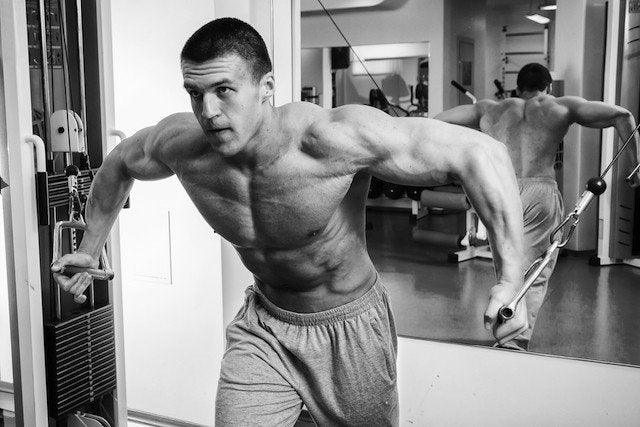

Does Training to Failure Increase Protein Synthesis
Table of Contents

Whats the Best Training for Protein Synthesis
The anabolic effect of resistance exercise appears not to be dependent on resistance exercise intensity but rather on the volume of exercise performed and that loads were lifted to muscular fatigue1, 2. Some researchers have suggested that maximal muscle fiber recruitment, which could be achieved regardless of intensity, was a principle factor for stimulating increases in muscle protein synthesis. What this means is that as you are lifting weighs, type I fibers are recruited first then as type I fibers fatigue; type II fibers are recruited.

Researchers reported that taking sets to failure seemed to enhance the anabolic effects of whey protein regardless of how much weight was lifted. The researchers had subjects consume a whey protein drink (15 grams of whey protein) at rest and before exercise and then had the subjects perform leg exercises where immediately after they had muscle biopsies taken to measure markers of protein synthesis. The subjects performed either 4 sets at 90% of maximal strength to failure (90FAIL); 2) 30% work-matched not to failure; or 3) 30% to failure (30FAIL). So in sum, the researchers had the subjects lift heavier weights to failure (90% of a 1-RM) and lighter weights to failure (30% of a 1-RM), and light weights not until failure (30% of a 1-RM). At the end of the study, protein synthesis was increased after exercise for 24 hours after exercise was performed. Additionally, the researchers reported that regardless of intensity or weight used, the researchers found that muscle protein synthesis was observed only after exercise performed until failure (i.e. 90FAIL and 30FAIL), which may suggest that maximal fiber activation (especially of type II fibers) is necessary for activation of muscle protein synthesis after exercise. When exercise in the lightweight group was not taken to failure, protein synthesis did not occur. The researchers speculated that protocols eliciting maximal fiber recruitment (i.e. both type I and type II fibers using manipulations of load and volume to induce fatigue) during exercise are critical to enhancing the anabolic effects of exercise for at least 24 h postexercise recovery. One may question how can a weightlifting programs using such a lightweight be effective for enhancing muscle protein synthesis? You have to consider although one protocol (i.e. 90% of a 1-RM) lifted heavier, the lighter program (30% of a 1-RM) lifted longer. What this means is that bodybuilding may want to vary their workouts using both heavy and light protocols in conjunction with using a high quality whey protein such a to enhance muscle protein synthesis. This suggests that bodybuilders can get similar increases in protein synthesis with the performance of low-load and high volume until fatigue.
1. Burd NA, West DW, Staples AW, Atherton PJ, Baker JM, Moore DR, Holwerda AM, Parise G, Rennie MJ, et al. Low-load high volume resistance exercise stimulates muscle protein synthesis more than highload low volume resistance exercise in young men. PLoS ONE. 2010;5: e12033.
2. Burd NA, Holwerda AM, Selby KC, West DW, Staples AW, Cain NE, Cashaback JG, Potvin JR, Baker SK, et al. Resistance exercise volume affects myofibrillar protein synthesis and anabolic signalling molecule phosphorylation in young men. J Physiol. 2010;588:3119–30.
3. Burd NA, West DW, Moore DR, Atherton PJ, Staples AW, Prior T, Tang JE, Rennie MJ, Baker SK, Phillips SM. Enhanced Amino Acid Sensitivity of Myofibrillar Protein Synthesis Persists for up to 24 h after Resistance Exercise in Young Men. J Nutr. 2011 Apr;141(4):568-73.

















